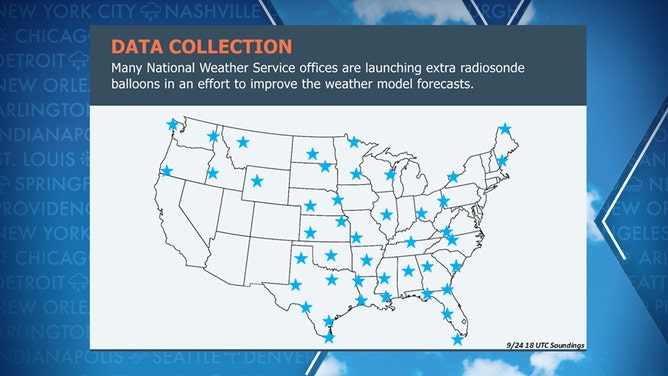'Everything is connected:' How Spokane weather balloons help Hurricane Ian forecast
By launching more balloons -- even thousands of miles from Hurricane Ian -- meteorologists and the computers that generate our forecast models can get updated real-time weather data from the upper atmosphere that are crucial to the accuracy of model projections.
The many ways hurricane data is gathered
Meteorologists are using a variety of tools to get a current read of atmospheric conditions that are crucial to feeding our forecast models that can help predict where Hurricane Ian will go.
SPOKANE, Wash. -- As Hurricane Ian churns away near the Gulf of Mexico with its eyes on Florida, National Weather Service meteorologists in Spokane have begun stepping up their efforts to help track the powerful storm by launching extra weather balloons.
Yes, even though Spokane is over 3,000 miles away from Florida with a 0% chance of hurricane impacts.
TRACK HURRICANE IAN WITH THESE FORECAST MAPS
"Everything is connected," said meteorologists with the National Weather Service in Spokane. "Stuff that happens across the Pacific Northwest has implications and impacts of what happens downstream i.e. how things evolve across the southeast US."
And they're not alone. National Weather Service offices across the Midwest and East Coast -- and a handful in the Pacific Northwest -- are helping the Hurricane Ian tracking efforts by launching weather balloons every six hours instead of the usual 12-hour intervals for the next several days.

National Weather Stations across the U.S. that launched extra weather balloons Saturday.
(National Weather Service)
The balloons measure temperature, dew point, relative humidity, atmospheric pressure and wind direction and speed and reach as high as 20 miles above the ground until it pops.
A POPPIN' SIGHT: WATCH AS WEATHER BALLOONS EXPLODE AS THEY SOAR HIGH INTO EARTH'S ATMOSPHERE
By launching more balloons, meteorologists and the computers that generate our forecast models can get updated real-time weather data from the upper atmosphere that are crucial to the accuracy of model projections.
"Extra balloon flights are helpful, (because) the data gets ingested into every model run to help forecast Ian's track & help the models become consistent with better data," NWS Spokane said.
The additional launches began Friday afternoon at the Florida stations and expanded across much of the nation on Saturday.
"This is the closest we have ever been to hurricane forecasting!" tweeted NWS Spokane meteorologists. "We are excited!"
